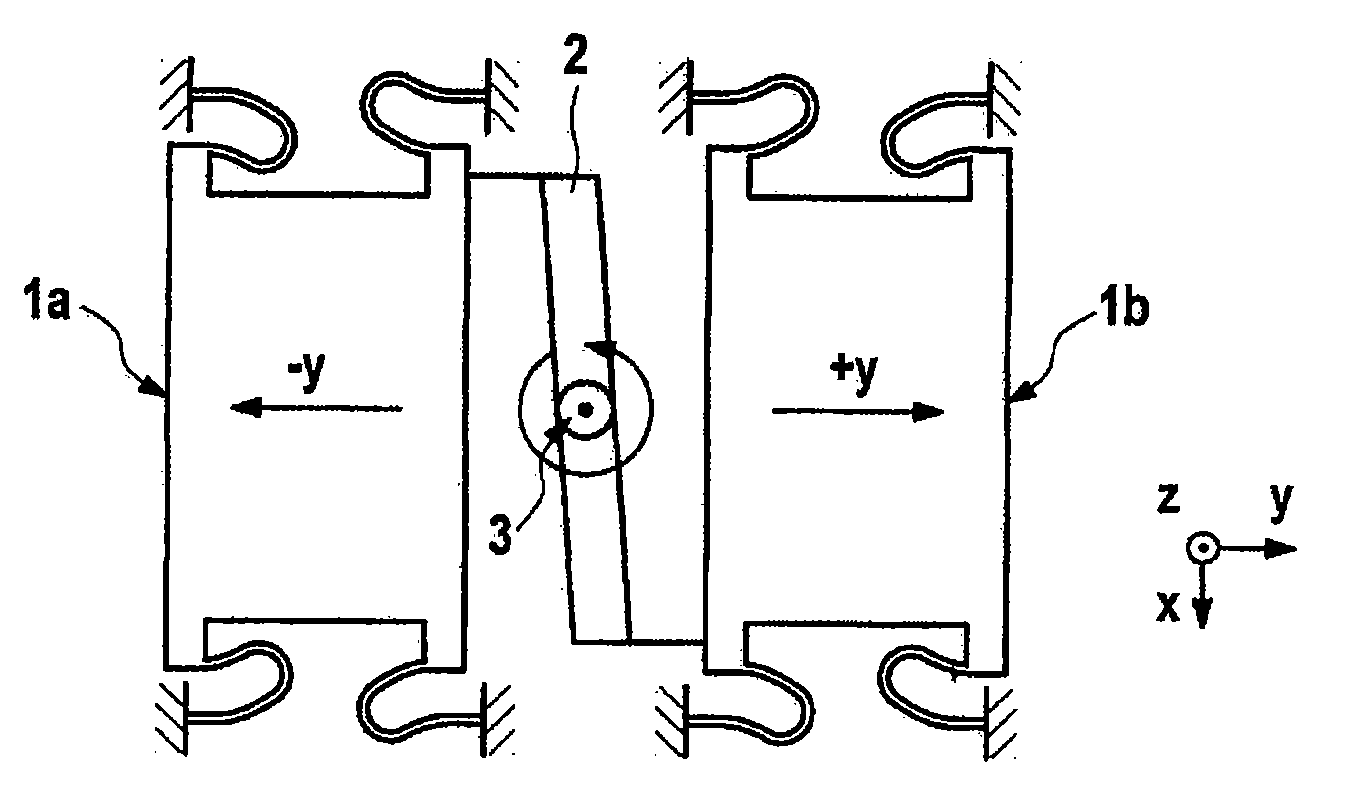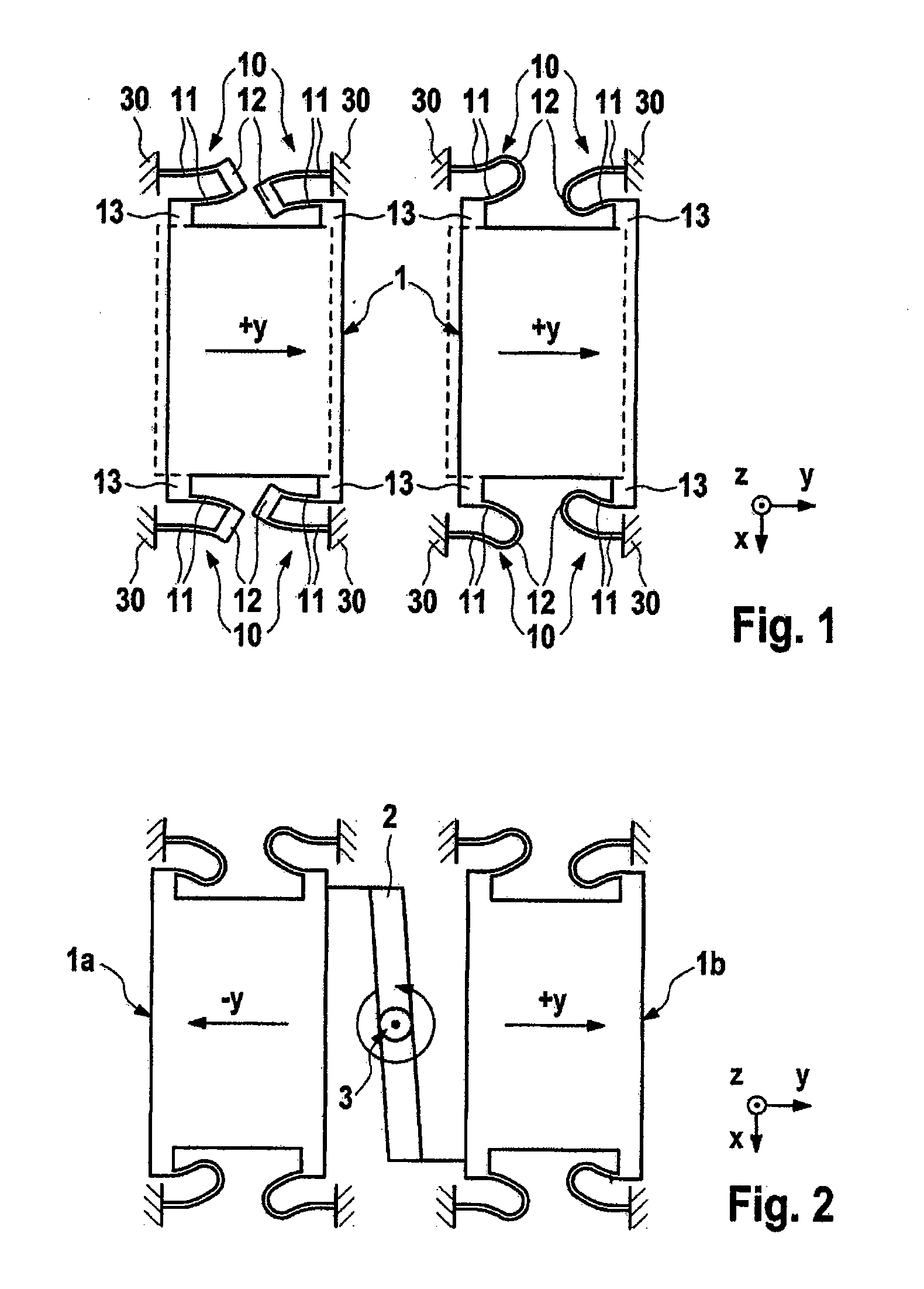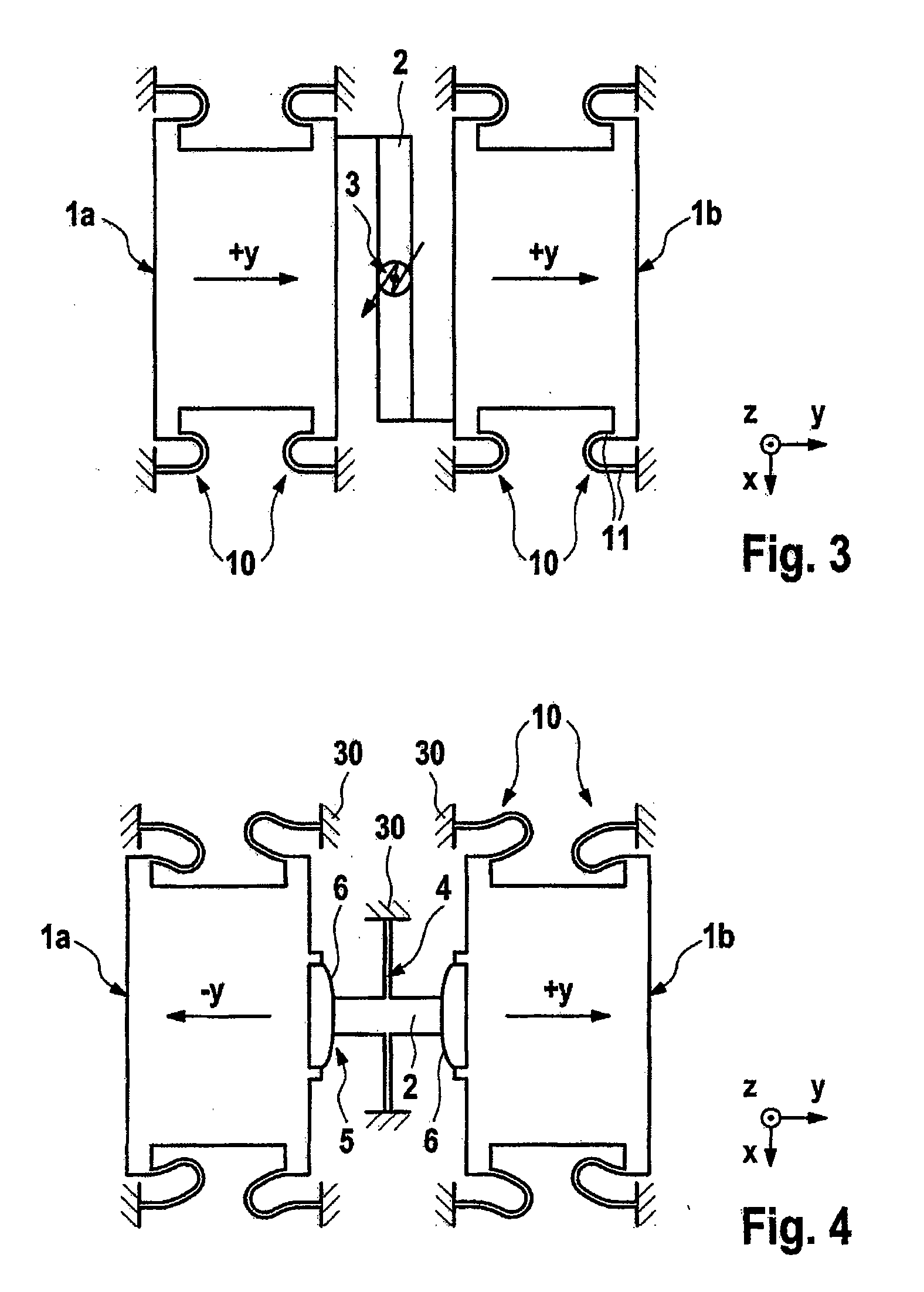Micromechanical rotation rate sensor with a coupling bar and suspension spring elements for quadrature suppression
a micromechanical and rotational speed sensor technology, applied in the direction of acceleration measurement using interia forces, turn-sensitive devices, instruments, etc., can solve the problems of unfavorable measurement, sensitive interference excitation of the seismic mass coupling by means of the proposed coupling unit, and undetectable edge angles of the respective structur
- Summary
- Abstract
- Description
- Claims
- Application Information
AI Technical Summary
Benefits of technology
Problems solved by technology
Method used
Image
Examples
Embodiment Construction
[0076]FIG. 1 shows two exemplary embodiments for suspending a seismic mass 1 from the substrate 30 by means of four exemplary proposed suspension spring elements or linear springs 10. The latter prevent quadrature signals occurring due to possible tilting of the spring cross sections as a result of fabrication inaccuracies. The two illustrated exemplary embodiments of the suspension spring elements or linear springs 10 each comprise here two bar sections 11, a connection section 12 and a coupling region 13, which connects one of the bar sections to the seismic mass 1. The oscillators illustrated in FIG. 1 are each deflected in the y direction, as is indicated by the dashed line. The suspension spring elements 10 are correspondingly likewise depicted deflected in the y direction.
[0077]FIG. 2 illustrates the coupling of two seismic masses 1a, 1b by means of a coupling bar 2. The rotational suspension means 3 of the coupling bar permits rotation about the z axis, perpendicular to the p...
PUM
 Login to View More
Login to View More Abstract
Description
Claims
Application Information
 Login to View More
Login to View More - R&D
- Intellectual Property
- Life Sciences
- Materials
- Tech Scout
- Unparalleled Data Quality
- Higher Quality Content
- 60% Fewer Hallucinations
Browse by: Latest US Patents, China's latest patents, Technical Efficacy Thesaurus, Application Domain, Technology Topic, Popular Technical Reports.
© 2025 PatSnap. All rights reserved.Legal|Privacy policy|Modern Slavery Act Transparency Statement|Sitemap|About US| Contact US: help@patsnap.com



